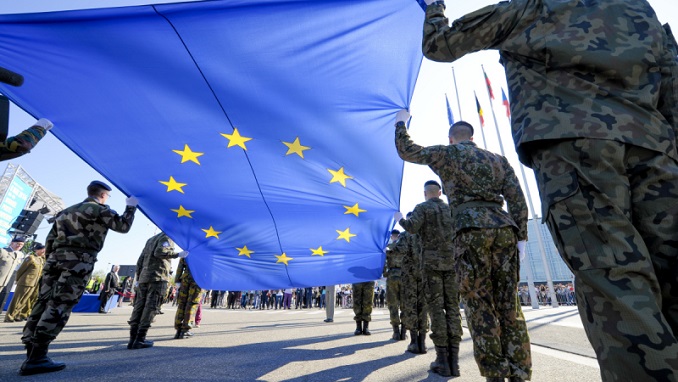
What will the European Union’s upcoming military strategy document ‘Strategic Compass’ entail?
Reports claim that the strategy maps out threats facing the bloc of European countries for the first time, and that it also covers crisis management, resilience, capability developments, and potential partnerships.
The Strategic Compass is meant to set out a common strategic vision for the European Union’s security and defense for the next five to 10 years.
The 28-page blueprint says that recent geopolitical shifts reminds the member states that it must take more responsibility for its own security. This would require action within the bloc, and beyond, with partners where needed, or alone if necessary.
The first part of the new blueprint is meant to cover security risks and trends across the EU, as well as globally. Prominently featured on a list of regional threats facing the EU were Russia and China.
The document said that Russia’s actions locally within the EU as well as in other countries show that the country contradicts the EU’s vision of the world and its best interests. It did include ways for the EU to engage with Russia in specific issues though, one of which specifically being the fight against climate change.
Diplomats have said that the threat Russia poses should have been better specified, such as military threats, military occupations and weaponizing energy supplies.
For China, the document said that while the country is a partner, it’s also an economic competitor, and a systemic rival. The draft said China is both involved and engaged in regional tensions, and increasingly becoming even more-so. It said that despite the country’s growing assertiveness, the EU plans to cooperate in areas of mutual interest, including countering piracy, global security, and climate change.
The document specifically added that internal EU divisions on how best to handle China require “strong unity” among the countries.
Outside of specific country identifications as threats, the document said that national intelligence agencies will review the EU’s Threat Analysis at least every five years, beginning in 2025, potentially sooner.
The blueprint also included a controversial proposal for the creation of a joint military intervention force. The EU Rapid Deployment Capacity would be formed for swift deployment of a force up to 5,000 troops with land, air and maritime components and capabilities.
The force comes in the wake of the Afghanistan crisis, after which EU member states discussed ideas for an initial entry force with the potential to move towards an ad-hoc military cooperation that could exist between member states that wanted to be a part of it. The force would respond to imminent threats, or crises, including rescue missions, or the stabilization of hostile environments.
While it would be based on “operational scenarios,” the draft text leaves open who would define them as such.
Currently the EU requires unanimity among members for operations such as these, which states have said is an issue in crisis situations. The draft text therefore tries to avoid slow decision-making processes, proposing more flexible arrangements, and an extended scope of common costs to contribute to rapid deployment of this capacity.
The draft says that by 2023, the EU will specify how Article 44 would allow a group of member states to plan, conduct, and operate missions within the EU framework.
Attendees have said that the planning discussion at the EU leaders’ dinner was loose. Heads of state and government, diplomats and officials attended the dinner to discuss military and security cooperation, and the question of the EU’s reliance on the United States.

Be the first to comment